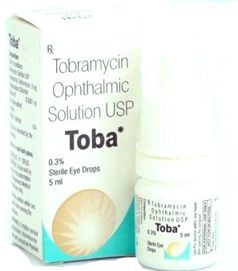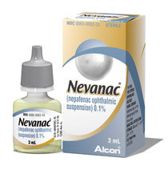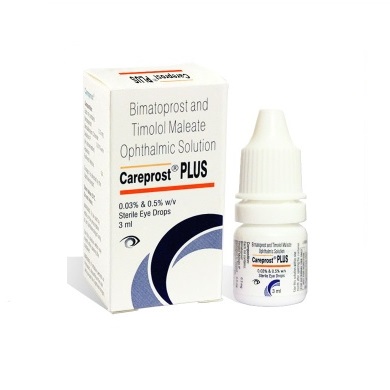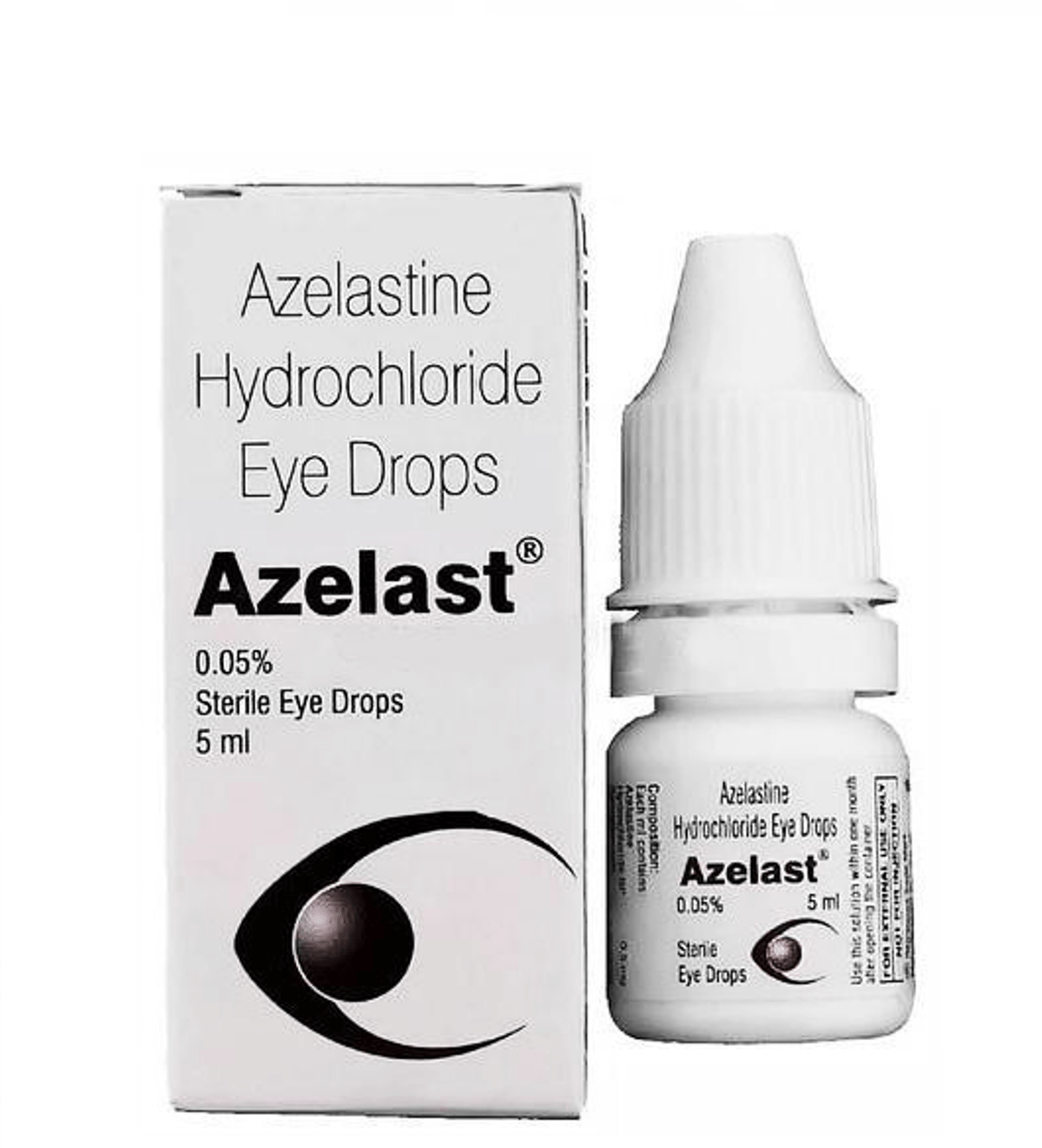Toba eye drops 0.3%
Toba eye drop is an antibiotic medicine. It comprises tobramycin. Tobramycin is used to treat bacterial infections (external infections) present in the eye.
The drops help prevent the further growth of bacteria that causes infection. The eye drop is ideal for ocular use. It is ideal for external applications only.
The medicine is not suitable for swallowing. The dropper shouldn’t be touched with the eye or hand. Follow the doctor’s instructions to use the drop properly. Do not use the drops without discussing them with your doctor.
Generic Name of Toba eye drops 0.3%
The generic name of Toba eye drops 0.3% is "Tobramycin."
Toba Eye Drops (Tobramycin) Usage:
- Bacterial Eye Infections: Toba eye drops contain Tobramycin, an antibiotic that is used to treat a variety of bacterial eye infections.
- Conjunctivitis (Pink Eye): These drops are commonly prescribed for bacterial conjunctivitis, also known as pink eye. This condition involves inflammation of the conjunctiva (the thin, clear tissue covering the white part of the eye and the inner surface of the eyelids) due to bacterial infection.
- Blepharitis: Toba eye drops may be used to manage blepharitis, an inflammatory condition affecting the eyelids and eyelash follicles caused by bacterial overgrowth.
- Bacterial Keratitis: They are also indicated for treating bacterial keratitis, an infection of the cornea (the clear front part of the eye) caused by bacteria.
- Prevention of Infection: In some cases, Toba eye drops might be used prophylactically to prevent infection after certain eye procedures or injuries.
- Ocular Surface Infections: Toba eye drops can address bacterial infections affecting the ocular surface, providing relief from symptoms such as redness, irritation, and discharge.
- Management of Ocular Discomfort: By targeting bacterial infections, these drops can help alleviate discomfort, itching, and irritation associated with bacterial eye infections.
- Safe and Effective Treatment: Tobramycin, the active ingredient in Toba eye drops, specifically targets bacteria responsible for eye infections while minimizing the risk of systemic side effects.
Usage Guidelines:
- Prescription: Toba eye drops are available by prescription and should be used under the guidance of a healthcare professional.
- Dosage and Duration: Follow the prescribed dosage and complete the full course of treatment as directed by your doctor, even if symptoms improve. This helps prevent recurrence and the development of antibiotic resistance.
- Proper Application: Wash your hands before using the drops. Tilt your head back slightly, pull down your lower eyelid to create a small pouch, and instill the prescribed number of drops. Close your eyes gently to distribute the medication evenly.
- Contact Lenses: If you wear contact lenses, remove them before applying the drops and wait at least 15 minutes before reinserting them.
- Avoid Touching the Eye: Avoid touching your eye or the tip of the dropper to prevent contamination.
- Adverse Effects: While Toba eye drops are generally well-tolerated, some individuals may experience mild burning, stinging, or temporary blurred vision upon application. If you experience severe irritation or any adverse effects, contact your healthcare provider.
- It's important to use Toba eye drops strictly as prescribed by your doctor. If you suspect a bacterial eye infection or have concerns about your eye health, consult a healthcare professional for proper evaluation and guidance.
Side effects of Toba eye drop 0.3%
The potential side effects of Toba eye drop 0.3% may include:
- Burning Sensation: Some individuals might experience a mild burning sensation in the eyes shortly after applying the drops. This sensation is usually temporary and should subside.
- Eye Irritation: Irritation of the eyes, characterized by discomfort, itching, or a feeling of foreign particles in the eye, can occur. This reaction typically resolves on its own as your eyes adjust to the medication.
- Eye Itching: Itching of the eyes might occur as a mild side effect. This can be bothersome, but it's usually transient and not a cause for concern.
- Eye Redness: Your eyes may appear slightly red after using the drops. This redness is often a temporary response to the medication and should diminish over time.
- Temporary Blurred Vision: Some individuals may experience temporary blurred vision immediately after applying the drops. This effect usually fades as the drops disperse and your eyes adjust.
- Allergic Reactions: In rare cases, an allergic reaction to the medication might occur. Symptoms can include severe itching, redness, swelling, or difficulty breathing. If you experience any of these symptoms, seek medical attention immediately.
- Dryness or Discomfort: In some instances, the drops might cause a sensation of dryness or discomfort in the eyes. This discomfort should not persist and typically improves as your eyes become accustomed to the medication.
It's important to note that these side effects are generally mild and temporary. If you experience severe or persistent discomfort or unusual symptoms, or if you have any concerns about the side effects, it's advisable to consult your healthcare provider or eye specialist for guidance. They can offer personalized advice and address any questions you may have.
How the eye does Toba eye drop by 0.3% help?
The eye drops help treat bacterial infections in the eyes. The medicines help stop the multiplication of bacteria that causes the infection. It also soothes the symptoms like itching, pain, soreness, and redness that occur due to an infected eye.
Your eye specialist will decide the dose and duration for which you need to take the medicine. The dose & duration depends on the severity of your condition. Do not halt the treatment in between. Finish the course of treatment as suggested by the health expert. Else, the infection will not be cured completely and can return. Else, the infection will not be cured completely and can return.
How Does Toba eye drop 0.3% Work?
The eye drops prevent bacterial growth by suppressing the protein combination in the bacterial cells.
- Active Ingredient Tobramycin: Toba eye drop 0.3% contains Tobramycin as its active ingredient, which is a member of the aminoglycoside class of antibiotics.
- Bacterial Protein Inhibition: Tobramycin exerts its antibacterial effects by specifically targeting bacterial cells causing eye infections. It interferes with the synthesis of bacterial proteins, particularly those involved in vital cellular functions.
- Disruption of Protein Production: When applied to the affected eye, Tobramycin enters bacterial cells and binds to their ribosomes, which are responsible for assembling proteins. This binding disrupts the ribosomal function, preventing the accurate translation of genetic information into proteins.
- Essential Protein Deficiency: The interference with protein synthesis leads to a shortage of essential proteins that are required for bacterial growth, replication, and survival. As a result, the bacteria are unable to perform crucial cellular processes necessary for their sustenance.
- Bacterial Cell Damage and Death: Without the ability to produce vital proteins, bacterial cells undergo structural and functional damage. This damage accumulates, eventually causing the bacteria to lose their ability to maintain normal cellular integrity and function. As a consequence, the bacterial cells are unable to reproduce and are ultimately destroyed.
- Local Application for Targeted Action: Toba eye drops is specifically designed for ocular use, allowing the Tobramycin to be applied directly to the infected area. This localized application ensures that the antibiotic concentration is highest at the site of infection, optimizing its effectiveness and minimizing the risk of systemic side effects.
- Preventing Bacterial Growth and Spread: By inhibiting bacterial growth and reproduction, Toba eye drops 0.3% effectively halts the progression of the eye infection. This helps alleviate symptoms such as redness, irritation, discharge, and discomfort associated with bacterial eye infections.
- Minimizing Antibiotic Resistance: Proper adherence to the prescribed treatment regimen is essential to prevent the development of antibiotic-resistant bacterial strains. Completing the full course of treatment as directed by your healthcare provider helps ensure that all the bacteria causing the infection are eradicated.
- Healthcare Professional Guidance: Toba eye drops should only be used under the guidance of a healthcare professional. The correct dosage and duration of treatment will be determined by your doctor based on the severity of the infection and your individual medical history.
By targeting the bacterial cells causing the eye infection and impeding their ability to thrive and multiply, Toba eye drop 0.3% provides a focused and effective approach to managing bacterial eye infections. If you have any further questions or concerns about how Toba eye drops work, don't hesitate to consult your healthcare provider for personalized information and guidance.
Interactions of eye drop with the other medicines
•As the eye drops are for external use only, the interactions of the eye drops are quite less with other drugs.
•Well, you should speak to your eye specialist if you are on other medicines to treat other health issues.
How to store & dispose of Toba 0.3 %
•Store the eye drops below 25°C. It needs to be kept safely in a dry & cool place.
•Do not give access to this drop to pets & children
- Storage:
- Store Toba 0.3% eye drops below 25°C (77°F) in a cool, dry place.
- Keep the eye drop bottle tightly closed when not in use to prevent contamination and maintain the effectiveness of the medication.
- Ensure that the bottle is kept out of reach of children and pets to prevent accidental ingestion.
- Disposal:
- Do not keep or use Toba 0.3% eye drops after the expiration date mentioned on the packaging. Expired medications may not be effective and could potentially be harmful.
- If your healthcare provider advises you to stop using the eye drops before the bottle is empty, do not save the remaining drops for future use.
- Do not flush the eye drop solution down the toilet or pour it into drains, as this can contaminate the water supply.
- When disposing of the eye drop bottle, follow your local guidelines for the proper disposal of medication containers. Some pharmacies or healthcare facilities may have programs for safe disposal.
- If you have unused or expired Toba 0.3% eye drops, consult your pharmacist or local authorities for proper disposal instructions. They can guide you on the appropriate and environmentally responsible way to dispose of the medication.
Proper storage and disposal of Toba 0.3% eye drops are essential to ensure the safety and efficacy of the medication while minimizing potential harm to the environment. If you have any questions about storing or disposing of the medication, consult your healthcare provider or pharmacist for guidance.
FAQS
Q-How long do I have to wait for the medicine to show effect?
The time it takes for Toba eye drops (Tobramycin) to show their effects can vary based on the severity of the bacterial eye infection and individual factors. However, you may start noticing improvements within a few days of consistent use. It's important to follow your healthcare provider's prescribed treatment regimen and complete the full course of medication, even if symptoms start to improve earlier. If you don't observe any improvement or if your symptoms worsen after a few days of use, contact your doctor for further guidance. Remember that proper adherence to the treatment plan plays a crucial role in achieving the desired therapeutic outcomes.
Q-How long do the Toba eye drops effects last?
The duration of Toba eye drops' (Tobramycin) effects can vary based on the specific bacterial infection being treated, the severity of the infection, and individual factors. In general, you may experience relief from symptoms and a reduction in the infection within a few days to a week of starting the medication. It's important to continue using the drops for the entire duration prescribed by your healthcare provider, even if you start feeling better earlier.
Once the infection is successfully treated, the effects of the medication should last as long as the infection does not return. However, if you experience any recurring symptoms or signs of infection after completing the prescribed course, it's crucial to consult your doctor for further evaluation and guidance.
Keep in mind that proper adherence to the treatment plan and timely communication with your healthcare provider is essential for ensuring the best outcomes and preventing any potential complications.
Q-Can I take alcohol while using Toba eye drops?
While Toba eye drops (Tobramycin) are typically applied directly to the eyes to treat bacterial infections, there is generally no known direct interaction between these eye drops and alcohol. However, it's recommended to exercise caution and moderation when consuming alcohol while undergoing any form of medication.
Alcohol consumption can sometimes affect your body's immune system and overall health, which may indirectly influence the healing process. Additionally, alcohol can lead to dehydration, which might impact your eyes' comfort and health.
To ensure the effectiveness of your treatment and your overall well-being, it's advisable to consult your healthcare provider or pharmacist regarding alcohol consumption while using Toba eye drops. They can provide personalized guidance based on your individual health condition and the specific circumstances of your treatment.
Q-Can I get the addiction to Toba eye drops?
Toba eye drops (Tobramycin) are an antibiotic medication used to treat bacterial eye infections. These drops are not known to cause addiction. They are prescribed for a specific period of time to address the bacterial infection and its associated symptoms.
Unlike certain medications that can lead to physical or psychological dependence, antibiotics like Toba eye drops are used to target bacterial infections and are not associated with addictive properties. It's important to follow your healthcare provider's instructions and complete the prescribed course of treatment to effectively treat the infection and prevent its recurrence.
If you have concerns about the use of Toba eye drops or any medication, it's always a good idea to discuss them with your healthcare provider. They can provide you with accurate information and address any questions or misconceptions you may have.
Q-Can I take Toba eye drops during pregnancy?
If you are pregnant or planning to become pregnant, it's crucial to consult your healthcare provider before using Toba eye drops (Tobramycin) or any other medication. Your doctor will consider the potential risks and benefits to both you and your developing baby before making a recommendation.
During pregnancy, medications are evaluated based on their potential effects on the developing fetus. While Toba eye drops are applied directly to the eyes and have a localized effect, it's still important to seek medical advice to ensure the safety of both you and your baby.
Your healthcare provider will weigh the necessity of using the medication against any potential risks. They can provide you with personalized guidance and recommendations based on your specific situation, medical history, and the stage of your pregnancy.
Never start or stop any medication during pregnancy without first consulting your doctor. Open communication with your healthcare provider will help you make informed decisions about your health and the well-being of your baby.
Q-Can I take Toba eye drops while I am breastfeeding?
If you are breastfeeding, it's important to consult your healthcare provider before using Toba eye drops (Tobramycin) or any other medication. Your doctor will consider the potential effects of the medication on your breastfed baby and provide guidance based on the available information.
Toba eye drops are applied directly to the eyes and have a localized effect, which may reduce the risk of significant exposure to your breast milk. However, your doctor will assess the potential risks and benefits to both you and your baby before making a recommendation.
During breastfeeding, medications can transfer to breast milk and potentially affect the nursing infant. Your healthcare provider will consider factors such as the medication's absorption into the bloodstream, its potential effects on the infant, and your baby's age and overall health.
Always consult your healthcare provider before using any medication while breastfeeding. They can provide you with the most accurate and up-to-date information regarding the safety of Toba eye drops or any other medication for your specific situation.
Q-What if I miss a dose of the Toba eye drops?
If you happen to miss a dose of Toba eye drops (Tobramycin), here's what you should do:
1. Take the Missed Dose: As soon as you realize you missed a dose, instill the eye drops into your affected eye(s) as directed by your healthcare provider. If it's close to the time for your next scheduled dose, do not double up on doses.
2. Continue Regular Schedule: After using the missed dose, continue with your regular dosing schedule. It's important to maintain the recommended interval between doses.
3. Do Not Overuse: Do not use extra drops to compensate for the missed dose. Using too many drops can increase the risk of side effects and complications.
4. Adherence Moving Forward: Focus on adhering to your prescribed dosing schedule moving forward. Consistent use of the medication is essential for effective treatment.
5. Consult Your Healthcare Provider: If you frequently miss doses or have concerns about managing your treatment regimen, consult your healthcare provider. They can provide guidance on how to best manage missed doses and ensure the effectiveness of your treatment.
Remember that Toba eye drops are typically used to treat bacterial eye infections, and consistent use is important for successfully managing the infection. If you have any questions or concerns about missed doses or your treatment plan, reach out to your healthcare provider for advice.
Q-Is it safe to drive after applying the Toba eye drop?
After applying Toba eye drops (Tobramycin), you might experience temporary blurred vision or mild discomfort in the treated eye. This can affect your ability to drive safely, especially immediately after application. Therefore, it's advisable to avoid driving right after using the eye drops.
If you experience significant discomfort, blurred vision, or any other side effects that might impair your vision or coordination, it's recommended to wait until your vision returns to normal before operating a vehicle. Your safety and the safety of others on the road are paramount.
For your well-being and the well-being of those around you, it's best to prioritize your eye health and wait until you feel confident in your ability to drive safely before getting behind the wheel. If you have any concerns about the effects of Toba eye drops on your vision and driving, discuss them with your healthcare provider for personalized advice.
Q-Does the Toba Eye Drop contain steroids?
No, Toba eye drops (Tobramycin) do not contain steroids. Tobramycin is an antibiotic medication used to treat bacterial eye infections. Steroids are a different class of medication known as corticosteroids, which have anti-inflammatory properties and are sometimes used to treat certain eye conditions.
Toba eye drops are specifically formulated with Tobramycin to target bacterial infections of the eye. If you have any concerns about the contents of the medication or its potential effects, it's recommended to consult your healthcare provider or pharmacist for accurate information.
Vital tips
•The eye drops are helpful to treat bacterial eye infections
•Make sure you do not skip doses and complete the treatment course.
•Do not stop the medicine in between the treatment course, even if you feel better.
•You may face a stinging sensation after the application of the drops for a minute or two. If it continues for longer, get in touch with the eye specialist.
•Do not use the eye drops after 4 weeks of opening the eye drop bottle.
•Do not interrupt the dose if the treatment course is not completed even if you feel much better
•Do not use the drop for an extended period than prescribed as it can damage the cornea.
Do not try to modify the dose of this medicine. Take it as prescribed to see the best results. In case you face any severe effects, visit your doctor immediately. Complete the treatment course and stop taking the medicine only after your doctor tells you to do so.
Conclusion
Toba eye drops (Tobramycin) serve as a vital antibiotic remedy for various bacterial eye infections. By targeting bacterial growth and alleviating discomfort, they offer relief from symptoms like itching, redness, and irritation. Following prescribed guidelines is essential, including proper application techniques, completing the full treatment course, and adhering to recommended dosages. While potential side effects such as temporary blurred vision or mild discomfort may arise, the drops' effectiveness in treating bacterial infections remains paramount. Consulting healthcare professionals about medication interactions, suitability during pregnancy and breastfeeding, and driving safety post-application is recommended for holistic care. Ultimately, Toba eye drops contribute to effective bacterial infection management when used responsibly under medical guidance.
Your review is submitted successfully. It will be live after approval, and it takes up to 24 hrs.







